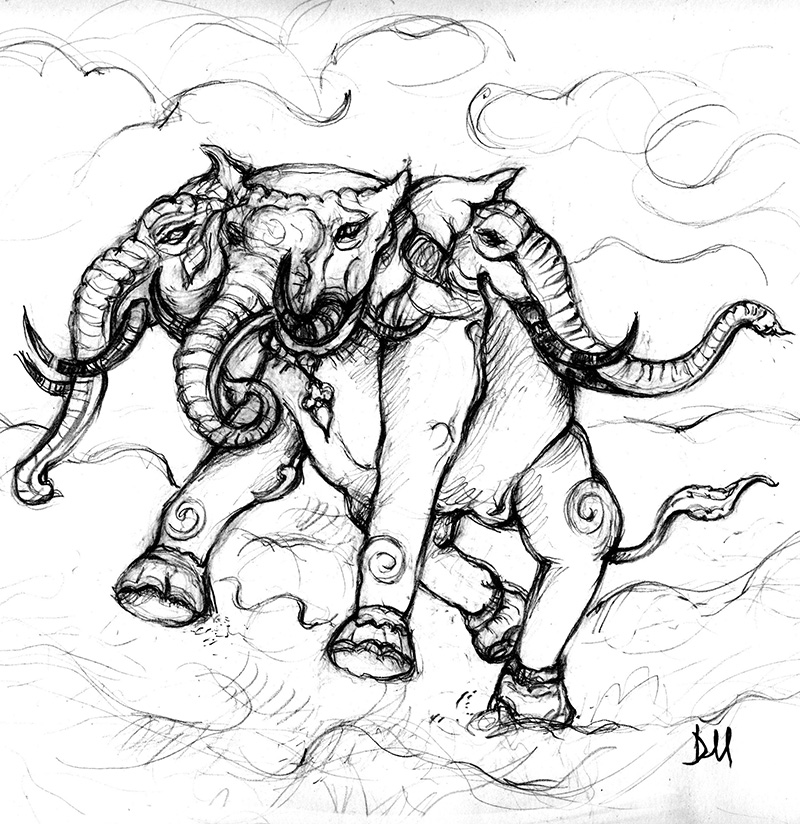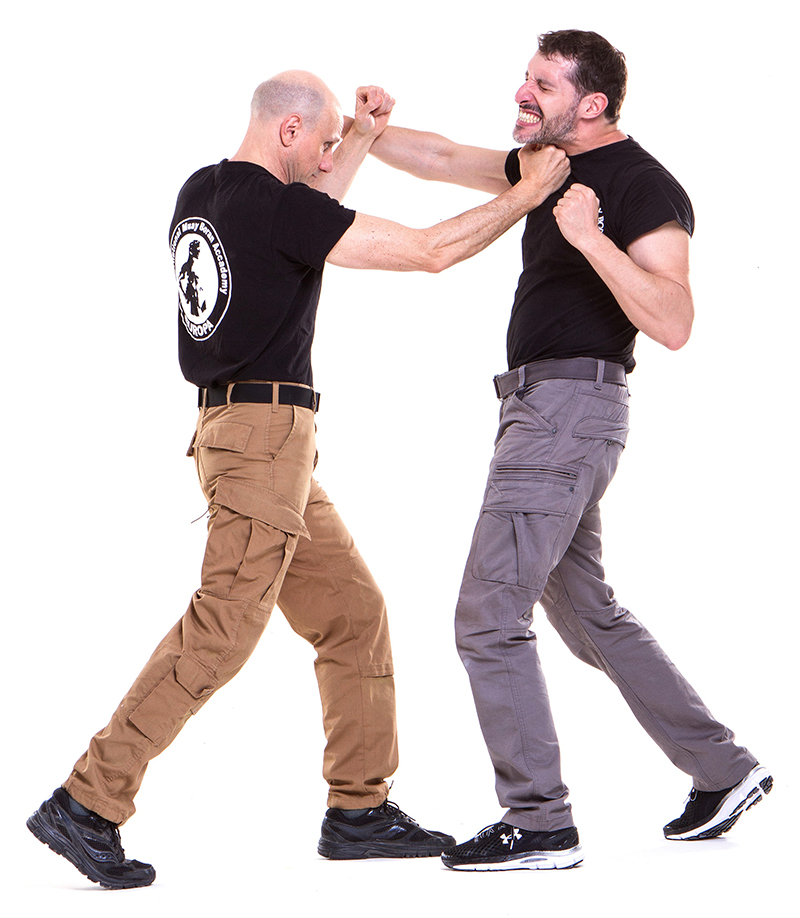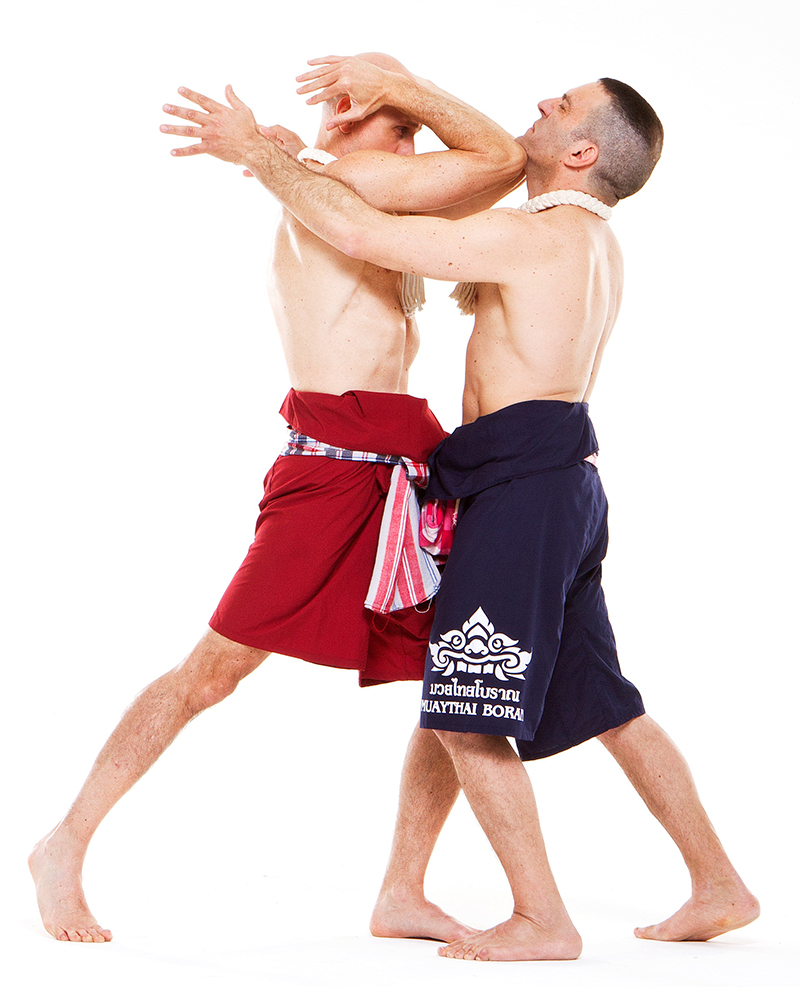
When elephants clash
The description of elephants’ relaxed power appears in many a tale of the Siamese tradition like a symbol of functional strength. In Thailand, elephants have been employed for many decades for both civilian and military purposes. A typical example of the latter category are the famed war elephants (yuttha hatthi, ยุทธหัตถี). In fact, in the past war elephants were trained and guided by humans in battle. Special military units employed elephant-mounted troops. The ancient Indian epics Ramayana and Mahabharata, elaborately depict elephant warfare. From the 15th century onwards, even Thailand adopted the use of war elephants. In many battles of the period it was the practice for leaders to fight in person while mounting war elephants. On January 25, 1592 (in Ayutthaya Era), during the final battle in the course of the fifth Burmese invasion of Siam, from the combat position on his war elephant, king Naresuan recognized the Burmese crown prince Mingyi Swa (who was also mounting a war elephant) and killed him with a deadly Ngaaw spear strike.
Muay masters of old carefully analysed the way elephants use their body weapons to attack and destroy: their trunk can be a formidable weapons when used to smash, grasp or break. Similarly, the tusks can be used to pierce, smash or cut: a forward thrust can transform the tusks into giant spears that can pass through any barrier. When the elephant gores upwards he can cut through all kind of material with the tip of his tusks. Smashing his tusks downwards an elephant can hammer and destroy with great ease. All of these actions have inspired Siamese masters: in fact, along the centuries they developed several strategies and fighting techniques that resembles a war elephant fighting on a battlefield.
One of the most spectacular sights that Siamese soldiers probably witnessed during field battles was a clash of two charging elephants. When two war elephants attack each other they cross their tusks (Chang Prasan Nga) in a violent head-on collision. In like manner, when a Muay Thai fighter is attacked he can defend and counterattack or, using the strategy of a charging war elephant, he can attack the attacker, stopping him in his tracks. A noted regional style called Muay Korat has included this fighting strategy among the five chief acts (Mae Mai) his practitioners had to master since they began training in that style. For example, against a wide swing (called Wiang Kwai or buffalo swing in that style), the Korat fighter is trained to step forward and occupy the opponent’s center line. A simultaneous block and vertical punch has to be applied without stopping. The punch is held vertical, since this is the technical canon of this style. The ideal target of the stop-hit is the aggressor’s throat: the damage inflicted by such a counter blow is potentially very serious (image 1).
Counter fighting is considered the peak of the art of Muay: when a fighter is highly skilled in countering opponents’ attacks he is said to have reached the pinnacle of his Martial Art. Among the many ways to apply the art of countering, attacking the attack (also called stop-hitting) is ranked first, as far as fighting efficiency is concerned. In fact, when a counter fighter is capable of striking “into” the opponent’s strike, the resulting blow is going to be more powerful than any direct attack he could ever throw. Sometimes the counter blow is executed together with a block or deflection: in this case both actions must be executed at unison, to be most effective.
The Nak Muay’s body weapons that imitate the elephant’s tusks are traditionally the elbows (sok) and the closed fists (mahd). In the applications of Chang Prasan Nga strategy the tip of the elbows are used to pierce, to upper-cut and to hammer.
1. Piercing. When the opponent charges and tries to hit your head with a hook or swing punch, don’t step back. On the contrary, use your leg power to spring forward and aim the tip of your elbows at his breastbone, throat or face. The first result will be that you will quickly close the gap, preventing the opponent’s punch to reach its target. Secondly, your forward step will charge your elbow attack with great kinetic energy. This energy will be summed to the opponent’s charging force, leading to a very hard impact. The hardness of your body weapon and the reduced impact surface (the elbows’ tips) will make your stop- hit an extremely efficient counter attack. (video 1)
2. Upward swinging. Sometimes your opponent will step forward with his arms outstretched in an attempt to grab your neck or throat. Even if this is not advisable, nevertheless it actually happens oftentimes in the heat of an all-out fight. When you are dealing with such an attack, don’t back up. Use the strategy of the charging elephant and spring forward with both of your elbows raised in front of your face. Follow up immediately with a double elbow uppercut that will slip inside the opponent’s arms. Aim the tips of your elbows at the opponent’s chin with a strong upward slash. One of your elbows will probably hit the point of the opponent’s chin with explosive power. The neck grab will not be completed and the opponent may be knocked-out dramatically (image 2).
3. Hammering. The elbows of a Nak Muay can also act like the elephant’s tusks when they are heavily smashed on an object from above. In this case the double elbow attack can be executed as a direct attack, most often combined with a jump, or it can be applied after a defensive technique. For example, when attacked with a front thrust kick, the Muay Boran stylist deflects the incoming kick with a short low parry in order to off balance the opponent and prepare the counter attack. Following the low parry, the Nak Muay jumps up and sticks the tips of his elbows into the opponent’s sides of the neck. Alternatively, the target of the double elbow strike could be the top of the head, a potentially lethal point of attack. (video 2)



